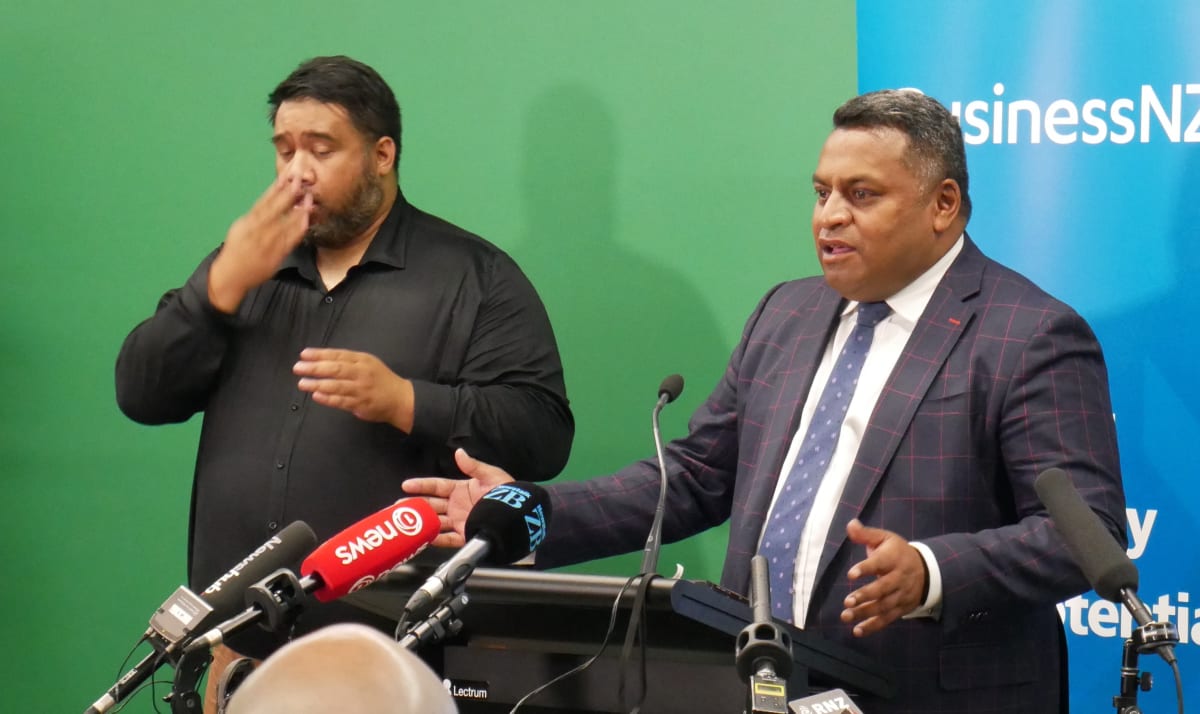The announcement of loosening border restriction was framed as ‘reconnecting’ New Zealand to the world, with promised floods of skilled workers, tourists and international students.
But some of those most affected by the border closures remain overlooked, with split migrant families from non-visa waiver countries only likely to be able to reunite with loved ones come October, when the borders open to visitors from anywhere in the world.
The Prime Minister brought Ministers Grant Robertson and Kris Faafoi with her to Auckland, where she announced the five-step border opening plan to a room full of cameras, broadcasted to an audience spread across the motu – raising the question of why the three of them made the trek up the North Island.

The Prime Minister was seemingly in a nostalgic mood, prefacing the border news with a brief oratory stroll down memory lane.
“It would be fair to say that [the last] several years now feel like another lifetime entirely,” she said. “For many of us, it now feels like time is in two parts. Life before – and now with – Covid. But that also means there will be life after Covid, too.”
And according to Ardern, the life hereafter, where New Zealand has adapted to the rolling waves of new variants, begins with a return to the trans-Tasman bubble – with vaccinated New Zealanders able to travel to and from Australia without a stay in MIQ from February 28.
That’s the first step in the five-step plan – so while the country follows phases, levels and traffic lights for in-country restrictions, border changes will be meted out in steps. What happens once the list of synonyms for gradual stages is exhausted remains to be seen.
Step Two opens the border to Kiwis in the rest of the world on March 13, along with skilled workers who earn 1.5 the median wage and working holiday scheme visas.
Then on April 13, current offshore temporary visa holders and international students will be able to come in.
July sees travel open to anybody from Australia and other visa-waiver countries, with the Prime Minister stating repeatedly that July is the latest this will happen, depending on what changes are seen across the volatile Omicron-struck outer world.
But for many families that have been separated for over two years, the five-step plan offers no hope until October, when the border is set to fully reopen and all visa categories come back into effect.
Immigration advisor Katy Armstrong has been fighting for migrant families who have been split from their families by border restrictions since the early days of the pandemic.
She wasn’t surprised to see nothing in the announcement to address the plight of these people, but said the disappointment was already rolling in through messages from the split family migrant community.
“In December the minister at a meeting with our industry was saying split families were on the radar,” she said. But despite these assurances – made by Minister for Immigration Kris Faafoi – those affected woke up this morning to no newfound sense of relief.
“It’s dawning on them today,” Armstrong said. “I would have expected by now that a split migrant family are no longer treated as fifth class people.”
When questioned on what the steps meant for split migrant families today, Faafoi said many would be served by the border opening to visa-waiver countries in July, and emphasised the fact that the July and October openings may come forward on the calendar.
The minister said many people in this position should be able to reunite with their families “in July or earlier”.
“As visa-waiver country visitors, that’s the vast bulk of those we expect to come through,” he said. “By October, those non-visa waiver countries will be able to reunite. We hope to drag all of those forward.”

However, many in the split family migrant community hail from non-visa waiver countries like India or the Phillipines – meaning the closest hope for a resolution on the heartache of family separation is likely in the last months of this year.
“A tourist from England can come in before the wife or child of someone from India who’s been working here throughout the pandemic,” said Armstrong.
And with months of difference lying between entry for people from visa waiver countries and everywhere else, Armstrong wonders what the purpose of this distinction really is.
“The whole visa waiver non-visa waiver thing is also just so discriminatory – and this has been reinforced by this announcement, instead of saying it’s time to stop all that malarkey,” she said. “If you are from somewhere like India and you are being blocked for this reason, we are basically saying you are less valuable to us. That’s the message.”
The split migrant families group were planning to hit the streets of Wellington in protest next Tuesday, under the banner of ‘Call to Action: Focus on Solutions’ – but the news of Omicron’s emergence in the community forced the group to call it off.
“I can’t believe we’re still having to bang on about it,” said Armstrong.



